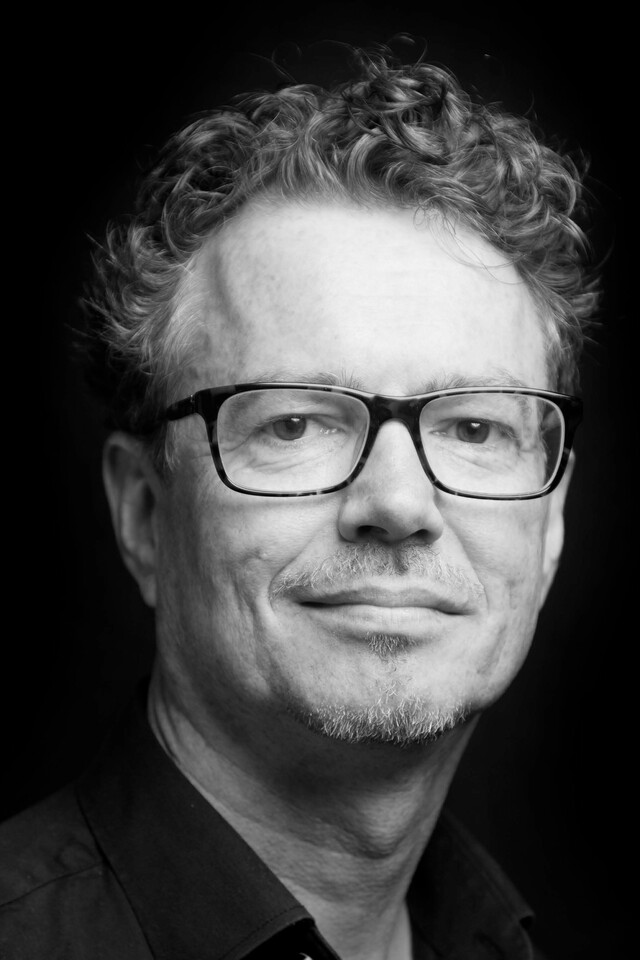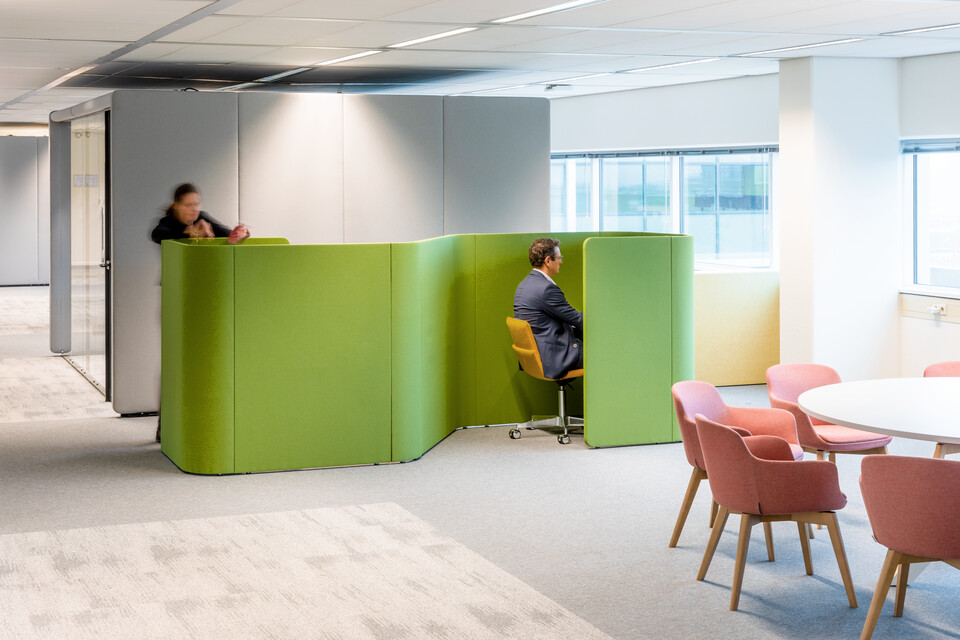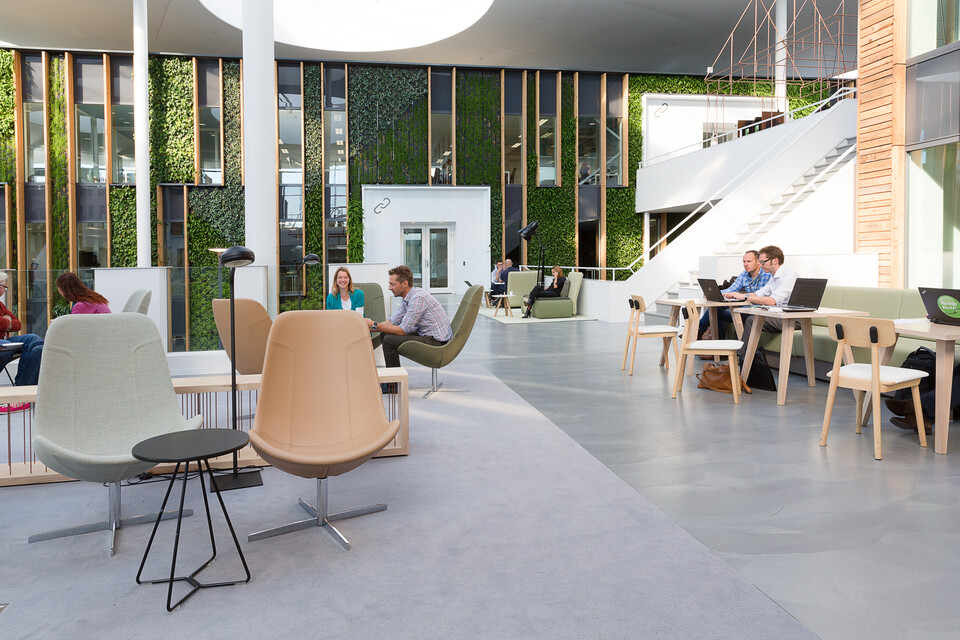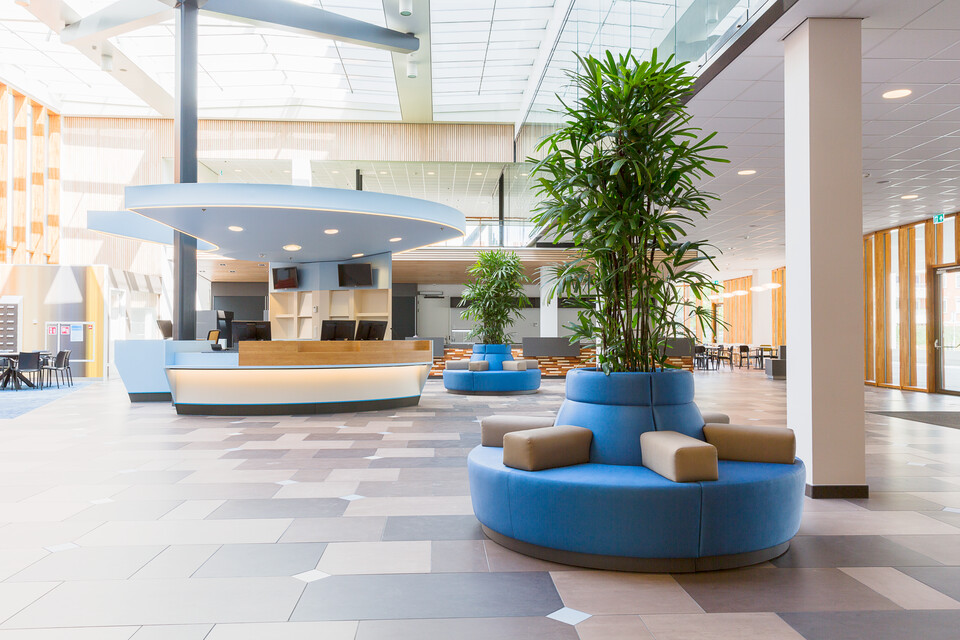Winkelwagen
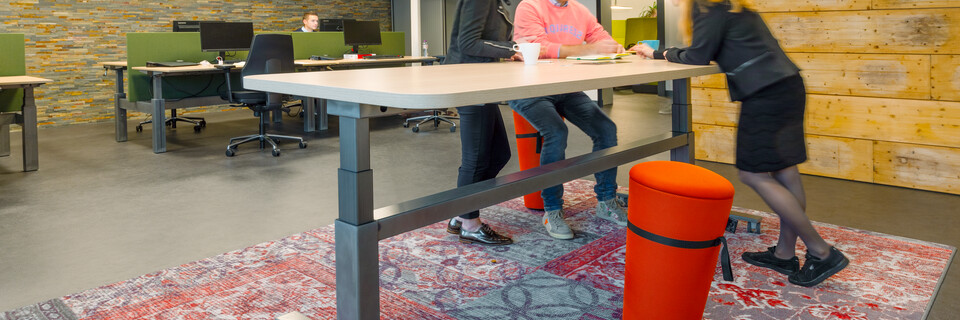
What does Scrum require of your office furnishing?
Agile working. The Scrum methodology. Organisations such as TomTom and NS cannot even imagine working without it. More and more of our clients have requested workstations that are compatible with working in Scrum teams. What does ‘Scrumming’ actually mean and how will it affect your office furnishing? Our interior designer Rob Lotstra will explain by answering 7 questions.
Furnishing advice
What does your ideal working environment look like? We will figure that out together. We always keep a watchful eye on the developments within your sector which are relevant to you. We will map out the most important activities of your organisation in order to establish an optimal working environment that does justice to your employees and the desired activities.
‘Change is constant in any organisation, at any one time’
What do ‘agile’
& ‘Scrum’ stand for?
Rob Lotstra: When we speak of Agile we literally mean agile. Scrum is one way of Agile working. A Scrum is actually rugby terminology; put your heads together and come up with a solution. Perhaps a comparison with the traditional working method will make things more clear.
The traditional method includes a fixed, linear product development process. You start off with a programme of requirements, which is followed by a design phase, a final plan and ultimately a final and tangible product. The downside of this method is that a lot can change during the course of a project.
The world around you is subject to constant change, the programme of requirements may change, objectives are revisited. If you build on assumptions or choices that are ‘obsolete’, your product may already be out of date when it enters the market. And what we have learned from TomTom and NS is that things are in a constant state of change, especially when we speak of apps and software development. In that instance, it is much more effective to apply a Scrum working method.
What does this entail?
A multidisciplinary and self-directed team is at the core of Scrum. This team houses all the necessary skills needed for the realisation of a final product. Any third parties needed? Simply add them to your team. The team will then present a new product every few weeks.
So-called ‘sprints’ of two or four weeks are often used in this working method. Each sprint leads to a working piece/product. In other working methods, the work that is conducted in a single sprint is divided into many stages. Each sprint is evaluated by the team but the client is also involved in the process.
Each Scrum team has a ‘product owner’, who communicates what is agreed with the client and keeps the programme of requirements up to date. The ‘Scrum master’ monitors the process on a daily basis. This is done via ‘daily standups’, which are short meetings that take place once- or even multiple times a day.
During such a daily standup, all participants answer three questions: what have I done so far, what will I be doing and what problems must be solved in order to present something new within two weeks’ time.
The main difference between Scrum and the traditional working method is that you can change or adjust things at any given time, ensuring that the client will get exactly what he signed up for.
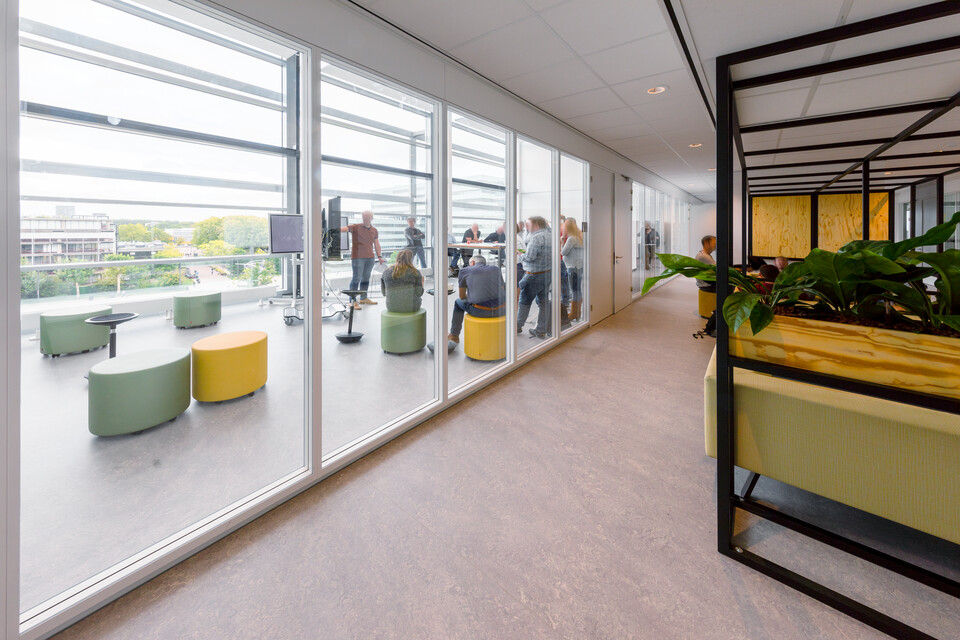
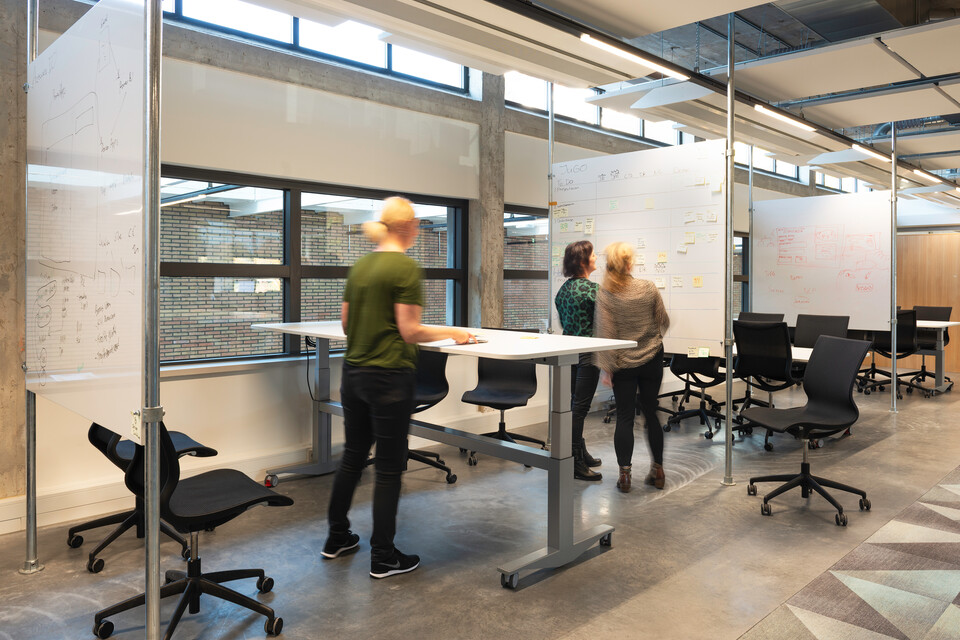
What does this require of an office’s interior design?
In the ideal situation, the office environment is just as dynamic as this working method. Ideally you would hold the daily standup on the office floor; a moment to put your heads together, in your physical environment.
This is when the team actually gets together (physically) and where real communication takes place, not online but on paper. Think of notes on walls and whiteboards, post-its, different phases and steps. This demands a dynamic environment where spontaneous meetings present no problem.
There are two more things worth mentioning. First there is the fact that the size of the Scrum team varies greatly between organisations. They vary in structure or demand a slightly different furnishing. Second is the tension between working individually and concentrating on the one hand and working in groups and discussing things on the other.
Some extra thought must be given to the visual and auditory privacy if there are multiple Scrum departments working beside each other in one open space. In that case some visual peace and quiet and good acoustics are even more important.
How can these challenges
be met?
That depends entirely on the client’s wishes, but part of it comes down to personal preference.
Some organisations prefer to have a separate Scrum room. Often situated near the workstations, where they usually hold stand-up meetings at large round tables with one or more bar stools. This requires the participants to be actively involved. Standing up at meeting is preferable to, for instance, sitting on a sofa or lounge chairs; studies have shown that the brain is less active when sitting slumped in a chair.
Scrum is often combined with the physical work environment. For example, the American concept of a ‘bull pit’: a horseshoe-shaped set-up with a Scrum table in the centre and lots of information displayed on the walls around to share thoughts on.
Do Scrum workstations meet health and safety regulations?
One could argue whether each workstation should meet all health and safety regulations. Those who just pull up a stool once in a while can simply make use of flex workstations. But before we follow that route, we will again have to look at the situation and our clients’ wishes: what are the dimensions of the room? Are fully equipped workstations required or will flex workstations suffice? Is high or low seating preferred? We can make it all happen.
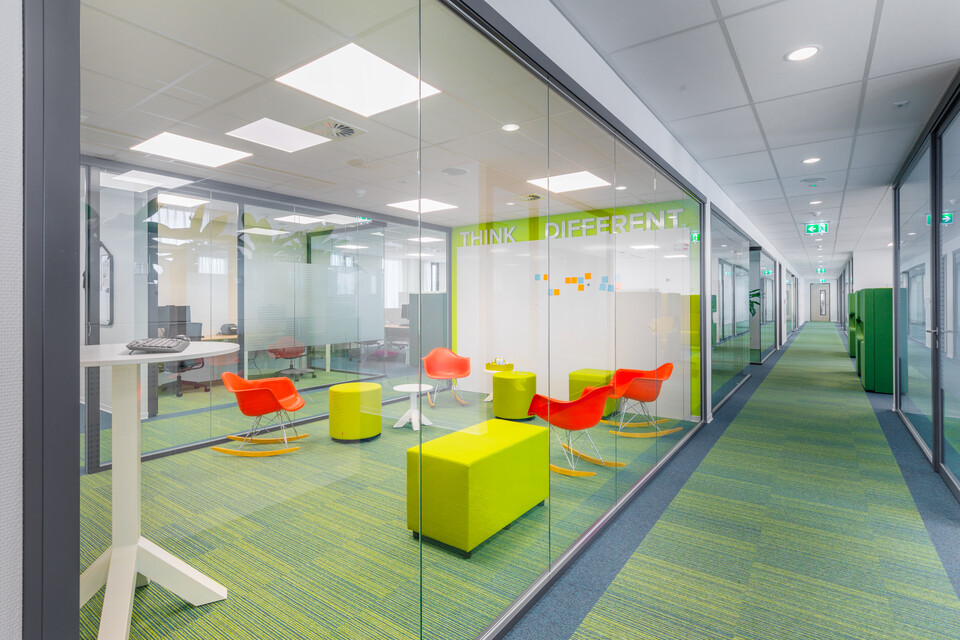
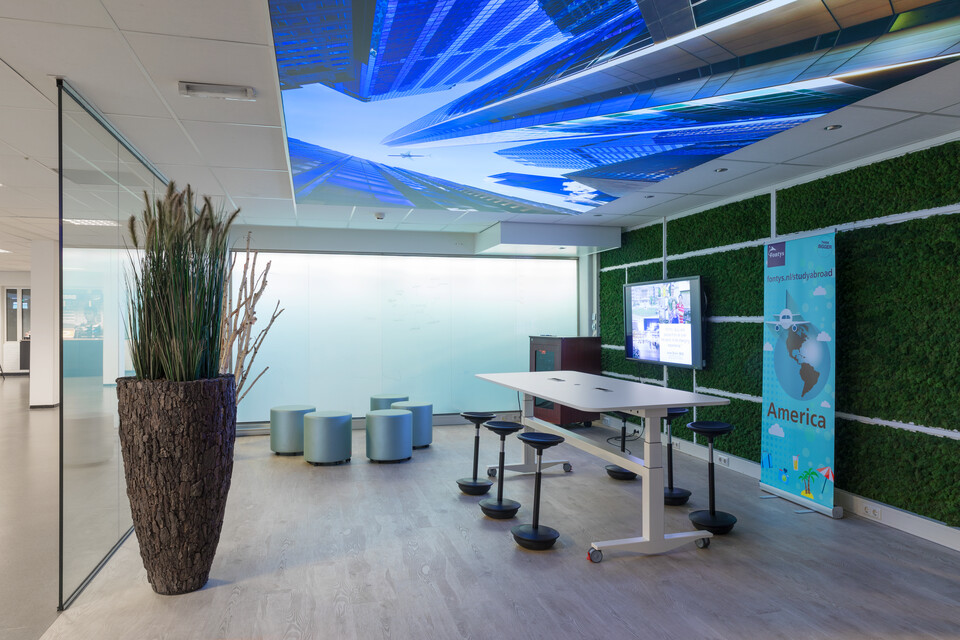
There are many upsides to Scrum. Are there any downsides?
One of the features of Scrum working is that it is far more product based than other working methods. You create something that is tangible, instead of investing a lot of energy and being left with nothing more than a big pile of documents. Thus: actions speak louder than words. The downside of this, however, is that few things get formally documented.
All energy goes directly to the team and communicating about the product, instead of wasting time on keeping files containing feedback or analyses. The benefit of this is that you work on the product and do so efficiently, instead of working merely on preconditions.
Have you actually adopted an agile working method yourself at Gispen?
We do apply certain aspects of agile working. During the design process, all involved parties work closely together and discuss things on a regular basis. This way fewer surprises will arise during the three design phases: from the initial sketch to the preliminary design and ultimately the final design. Agile working is therefore also suitable for other branches than software development or – another well-known example – the automotive industry. I believe that there is a lot to be gained, especially in terms of innovation.
Compatible products
-
![FMHaaglanden FMHaaglanden headerm]() Blog
BlogACOUSTICS
Clever solutions with a positive effect
-
![Alliander Alliander landscapem]() Blog
BlogEvidence-based furnishing
Environments affect people. Carola van de Bilt, interior architect, will explain things further.
-
![Reinier de Graaf Reinier de Graaf landscapem]() Blog
BlogEnvironmental Psychology
What does it really mean? Interior architect Nelleke Lagerwerf presents her point of view in in this interview.
-
![Thuiswerken banner Thuiswerken_laptop]() Blog
BlogRemote working tips
With only a few useful tips, you can create a pleasant home workspace and make the best of an unusual situation.
